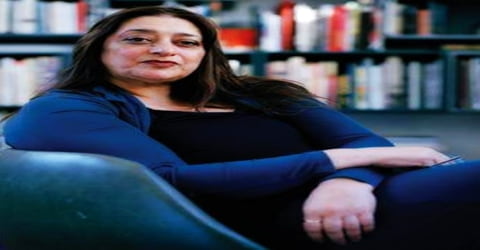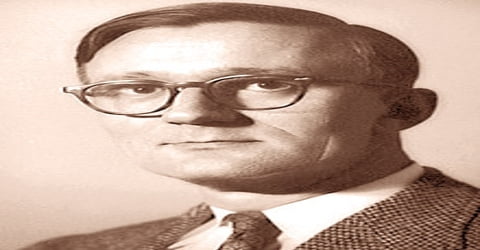Biography of Zaha Hadid
Zaha Hadid – Iraqi-British architect.
Name: Dame Zaha Mohammad Hadid
Date of Birth: 31 October 1950
Place of Birth: Baghdad, Iraq
Date of Death: 31 March 2016 (aged 65)
Place of Death: Miami, Florida, United States
Occupation: Architect
Father: Muhammad al-Hajj Husayn Hadid
Mother: Wajiha al-Sabunji
Early Life

An Iraqi-born British architect known for her radical deconstructivist designs, Zaha Hadid was born on 31st October 1950 in Baghdad, Iraq, to an upper-class Iraqi family. Often named as the most prominent contemporary female architect, or singled out for notice because of her Iraqi Arab background, Hadid is significant beyond these accidents of birth for her intellectual toughness, her refusal to compromise on her ideas even when very few of them were being realized in concrete and steel. She was the first woman to receive the Pritzker Architecture Prize, in 2004. She received the UK’s most prestigious architectural award, the Stirling Prize, in 2010 and 2011. In 2012, she was made a Dame by Elizabeth II for services to architecture, and in 2015 she became the first and only woman to be awarded the Royal Gold Medal from the Royal Institute of British Architects.
For many years, her designs filled the pages of architecture periodicals but were dismissed as impractical or as too radical, and Zaha Hadid even thought about giving up architecture after she suffered a major rejection in her adopted homeland of Britain in 1995. Her star began to rise internationally when her design for Cincinnati, Ohio’s new Center for Contemporary Art was selected and built, earning worldwide acclaim. By the mid-2000s Hadid employed nearly 150 people in her London office and was working hard to keep up with new commissions that were coming in, offering her a chance to help reshape the world architectural landscape.
Known for her highly expressive designs marked by sweeping fluid forms of multiple perspective points, Zaha Hadid was considered a pioneer in contemporary avant-garde architecture styles. Internationally renowned for her experimental styles and innovative designs, she was the mastermind behind the designs of the aquatic center for the London 2012 Olympics and the Broad Art Museum in the U.S., among others. Born in Baghdad into a wealthy family, she received a luxurious upbringing and attended boarding schools in England and Switzerland. Even as a young girl there was no doubt in her mind that she would one day pursue a professional career. Intelligent and ambitious, she studied mathematics at the American University of Beirut before moving to London to attend the Architectural Association School of Architecture. Zaha Hadid eventually became a British citizen and started her own architecture practice which proved to be very successful. Her innovative designs and experimental styles gained much international notice and within years she established herself as a world-renowned architect. She also pursued a teaching career and undertook some high-profile interior work in addition to her architectural career.
Childhood, Family and Educational Life
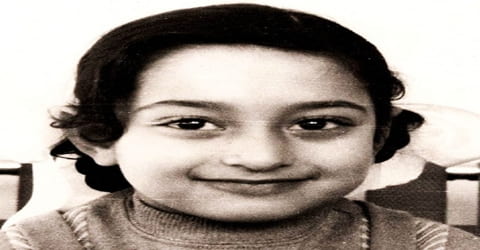
Zaha Hadid, in full Dame Zaha Hadid (Arabic: زها حديد Zahā Ḥadīd), was born on 31st October 1950 in Baghdad, Iraq, into an influential family. Her father, Muhammad al-Hajj Husayn Hadid, was an industrialist and the co-founder of the National Democratic Party in Iraq. Her mother, Wajiha al-Sabunji, was an artist. Her brother Foulath Hadid was a writer, accountant, an expert on Arab affairs. Zaha Hadid once mentioned in an interview how her early childhood trips to the ancient Sumerian cities in southern Iraq sparked her interest in architecture.
In the 1960s Zaha Hadid attended boarding schools in England and Switzerland. She studied mathematics at the American University of Beirut before moving, in 1972, to London to study at the Architectural Association School of Architecture. There she studied with Rem Koolhaas, Elia Zenghelis and Bernard Tschumi.
Personal Life
Zaha Hadid never married nor had any children. She was entirely dedicated to her professional career. She broke many social stereotypes to emerge as a role model for Muslim women and opened up opportunities for women as well as Muslims to become architects.
Zaha Hadid was once the highest paid architect in the world. At the time of her death, her estimated net worth was a staggering $215 million including her property holdings, stock investments, cosmetic deals, restaurants, a football team, a brand of Vodka, top-selling brand of perfume, and a fashion line.
Career and Works
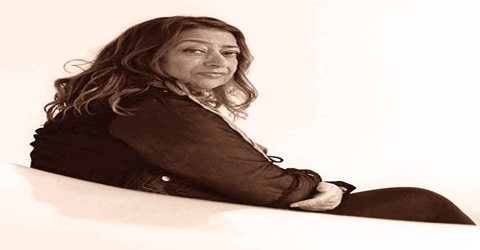
Zaha Hadid traveled to London, in 1972 to study at the Architectural Association, a major center of progressive architectural thought during the 1970s. There she met the architects Elia Zenghelis and Rem Koolhaas, with whom she would collaborate as a partner at the Office of Metropolitan Architecture. Hadid established her own London-based firm, Zaha Hadid Architects (ZHA), in 1979.
After graduation in 1977, Zaha Hadid went to work for her former professors, Koolhaas and Zenghelis, at the Office for Metropolitan Architecture, in Rotterdam, the Netherlands. Through her association with Koolhaas, she met the architectural engineer Peter Rice, who gave her support and encouragement during the early stages of her career. Hadid became a naturalized citizen of the United Kingdom. She opened her own architectural firm, Zaha Hadid Architects, in London in 1980. During the early 1980’s Hadid’s style introduced audiences to a new modern architecture style through her extremely detailed and professional sketches. At the time people were focused on postmodernism designs, so her designs were a different approach to architecture that set her apart from other designers.
Zaha Hadid taught courses at the Architectural Association and filled notebooks with one-of-a-kind ideas, some of which were published in architecture magazines or exhibited in galleries. Hadid began to enter design competitions, some of them research-oriented and others for buildings intended for construction. Her design for The Peak, a sports club jutting out horizontally from one of the mountain slopes that surround the city of Hong Kong, won the top prize in the institution’s competition, but the building was never constructed. Hadid’s competition entries in the 1980s and early 1990s were little known to the public at large but stirred up interest among her fellow architects, and even after she became famous, her website continued to list her competition prizes before focusing on her actual building projects.
Zaha Hadid’s first major built project was the Vitra Fire Station (1989-93) in Weil am Rhein, Germany. Composed of a series of sharply angled planes, the structure resembles a bird in flight. Her other built works from this period included a housing project for IBA Housing (1989-93) in Berlin, the Mind Zone exhibition space (1999) at the Millennium Dome in Greenwich, London, and the Land Formation One exhibition space (1997-99) in Weil am Rhein. In all these projects, Hadid further explored her interest in creating interconnecting spaces and a dynamic sculptural form of architecture.
Zaha Hadid’s design was chosen for the ‘Cardiff Bay Opera House’ in Wales at 1994. This gave her some publicity and fame, but unfortunately, the building was not approved to be built as the city chose to spend the money on a stadium instead. A major success came in 1998 when her design was chosen for the ‘Rosenthal Center for Contemporary Art’. This was her first American project and was the recipient of two awards, the ‘Royal Institute of British Architects Award’ in 2004 and the ‘American Architecture Award’ from ‘The Chicago Athenaeum’ the next year.
Zaha Hadid’s another major project was a ski jump at Bergisel, in Innsbruck Austria. The old ski jump, built in 1926, had been used in the 1964 and 1976 Winter Olympics. The new structure was to contain not only a ski jump but also a cafe with 150 seats offering a 360-degree view of the mountains. Hadid had to fight against traditionalists and against time; the project had to be completed in one year, before the next international competition. Her design is 48 meters high and rests on a base seven meters by seven meters. She described it as “an organic hybrid”, a cross between a bridge and a tower, which by its form gives a sense of movement and speed.
In her career as an educator, Zaha Hadid held the Sullivan Chair professorship at the University of Illinois at Chicago’s School of Architecture in the 1990s. She was also a guest professor at various institutions including the Hochschule für bildende Künste Hamburg (HFBK Hamburg), the Knowlton School of Architecture at Ohio State University, and the Masters Studio at Columbia University.
Zaha Hadid’s next major American commission came from Bartlesville, Oklahoma, site of the Price Tower designed by legendary American architect Frank Lloyd Wright. Hadid was hired to design a museum adjoining the Wright building a choice that made sense, for Hadid was sometimes compared to Wright for her futuristic designs and her visionary rethinking of the relationships between humans and buildings. In 2006 it was one of Wright’s most famous structures, the Guggenheim Museum in New York that played host to a major retrospective of Hadid’s work. Between 1997 and 2010 Hadid constructed a much more ambitious bridge, the Sheikh Zayed Bridge, between the island of Abu-Dhabi and the mainland of Abu-Dhabi, as well as to the international airport. Both the design of the bridge and the lighting, consisting of gradually changing colors, were designed to give the impression of movement. The silhouette of the bridge is a wave, with a principal arch 235 meters long, standing 60 meters above the water. The total span of four lanes is 842 meters long and also includes pedestrian walkways.
In 2010 Zaha Hadid’s boldly imaginative design for the MAXXI museum of contemporary art and architecture in Rome earned her the Royal Institute of British Architects (RIBA) Stirling Prize for the best building by a British architect completed in the past year. She won a second Stirling Prize the following year for a sleek structure she conceived for Evelyn Grace Academy, a secondary school in London. Hadid’s fluid undulating design for the Heydar Aliyev Center, a cultural center that opened in 2012 in Baku, Azerbaijan, won the London Design Museum’s Design of the Year in 2014. She was the first woman to earn that award which judges designs in architecture, furniture, fashion, graphics, product, and transportation and the design was the first from the architecture category.
In the mid-2000s Zaha Hadid finally received a full-scale commission in the British Isles, for a cancer-care building called Maggie’s Centre in Fife, Scotland. Highly visible Hadid buildings planned or underway included a bridge in the Persian Gulf state of Abu Dhabi, a movie theater complex in Barcelona, Spain, and several new museums. Greater international exposure seemed assured in a project waiting further down the line: the aquatics building for the 2012 Summer Olympics to be held in London. And she seemed to be outdoing herself with each successive design. “Co-curator Monica Montagut quotes Hadid’s statement that ‘I still believe in the impossible,'” noted Raymund Ryan in his Architectural Review commentary of Hadid’s Guggenheim exhibition. “Judging from this display in New York City, there are few limits to what Hadid might do next.”
Zaha Hadid’s later major works are found in Asia. The Galaxy SOHO in Beijing, China (2008-2012) is a combination of offices and a commercial center in the heart of Beijing with a total of 332,857 square meters, composed of four different ovoid glass-capped buildings joined together by multiple curving passageways on different levels. Hadid explained, “the interior spaces follow the same coherent formal logic of continual curvilinearity.” The complex, like most of her buildings, gives the impression that every part of them is in motion. The Dongdaemun Design Plaza (2007-2013) is among the largest buildings in Seoul, South Korea.
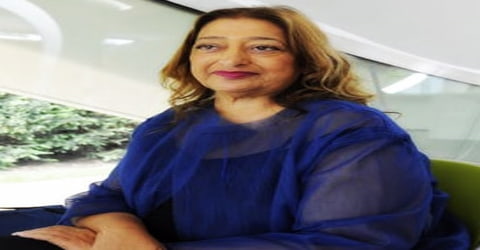
Zaha Hadid’s fantastic forms were often derided, and the expense and scale of many of her commissions were frequently ridiculed. Indeed, the problematic site for the London Aquatics Centre forced Hadid to scale back her design, while mounting protests, notably from preeminent Japanese architects, led her to scrap her plan altogether for the New National Stadium for the 2020 Olympics in Tokyo. Further controversy followed after a 2014 report disclosed that some 1,000 foreign workers had died because of poor working conditions across construction sites in Qatar, where her Al Wakrah Stadium for the 2022 World Cup was set to break ground.
Zaha Hadid designed only one government building, offices for the port authority, or Havenhuis, in Antwerp, Belgium, completed in 2016. It was one of the last works of Hadid, who died in 2016, the year it opened. The square in front of the building was renamed to Zaha Hadidplein (Zaha Hadidsquare) to honor her death.
Zaha Hadid left 36 unfinished projects, including the 2022 World Cup stadium, the Antwerp Port House (2016), and the King Abdullah Petroleum Studies and Research Center (2017; KAPSARC) in Riyadh, Saudi Arabia. Her business partner, Patrik Schumacher, assumed leadership of her firm, assuring the completion of existing commissions and the procurement of new ones.
Awards and Honor
Zaha Hadid received her first award in 1982, the ‘Gold Medal Architectural Design’ for her British Architecture.
In 2002, Zaha Hadid won the international design competition to design Singapore’s one-north master plan. She became the first female recipient of the Pritzker Architecture Prize, in 2004. This award is commonly known throughout the world as architecture’s highest honor.
Zaha Hadid’s design won the competition for the new city casino of Basel, Switzerland and she was elected as a Royal Academician, in 2005. In 2006, she was honored with a retrospective spanning her entire work at the Guggenheim Museum in New York; that year she also received an Honorary Degree from the American University of Beirut.
Zaha Hadid was given the honor of ‘Dame Commander of the Order of the British Empire’ in 2012.
In 2014, the Heydar Aliyev Cultural Centre, designed by her, won the Design Museum Design of the Year Award.
Death and Legacy

Zaha Hadid died of a heart attack on 31st March 2016, in a Miami hospital, where she was being treated for bronchitis. She is buried between her father Mohammed Hadid and brother Foulath Hadid in Brookwood Cemetery in Brookwood, Surrey, England. In her will, she left £67m and bequeathed various amounts to her business partner and family members. Her international design businesses, which accounted for the bulk of her wealth, were left in trust.
Before her fame as an architect, Zaha Hadid had a successful teaching career at several institutions. These included the ‘Harvard Graduate School of Design’ and the ‘University of Illinois’ at ‘Chicago’s School of Architecture’.
Zaha Hadid completed the building of the ‘Lois & Richard Rosenthal Center for Contemporary Art’ in 2003. This was the first American museum designed by a woman and proclaimed the ‘most important American building to be completed since the cold war’ by the New York Times. In 2010, her Maxxi building design was awarded the Stirling Prize. The national museum is located in Rome and is said to be “a masterpiece fit to sit alongside Rome’s ancient wonders,”.
Zaha Hadid was a member of the Encyclopædia Britannica Editorial Board of Advisors (2005-06). She was made a Dame Commander of the Order of the British Empire (DBE) in 2012. She was named an honorary member of the American Academy of Arts and Letters and an honorary fellow of the American Institute of Architects. She was on the board of trustees of The Architecture Foundation.
Information Source:
